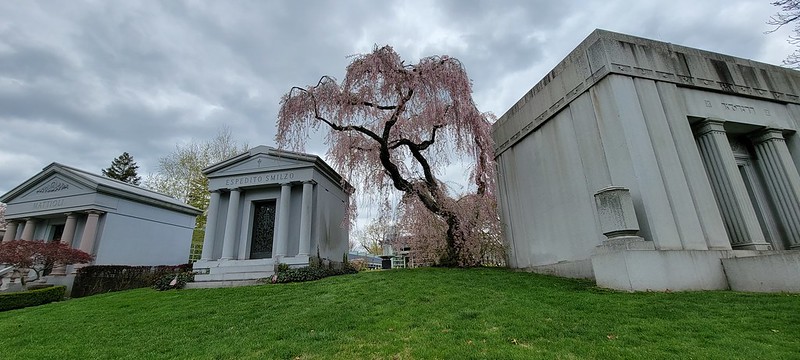Today, November 30th is the Remembrance Day for Lost Species. Animals, mostly charismatic megafauna, get most of the attention. Plants are mostly overlooked. I root for the underdog.

As in past years, I limit this list to northern North America for two reasons:
- There are many more tropical plants, and plant extinctions, than I can manage.
- Restricting this list geographically is in keeping with my specialization in plants native to northeastern North America.
The lists below are sorted by botanical name, linked to an accompanying Wikipedia article, if available. Most of these species were endemic to a small area, sometimes only a single site. Because of this, most have no common name, and the taxonomy of many is unclear. Each entry includes the common name, if any, last know location, and year it was last observed in the wild.
I’ve had no additions or updates to these lists since 2020. If you have additions or corrections to this list, please let me know, and provide a link which I can research.
Extinct
- Agalinis caddoensis, Railroad near Shreveport, Louisiana. last observed 1913
- Astilbe crenatiloba, Roan Mountain false goat’s beard, Roan Mountain, Tennessee, 1885
- Astragalus endopterus, near Cameron, Coconino County, Arizona. Last observed 1947
- Astragalus kentrophyta var. douglasii, Washington/Oregon?, 1883
- Astragalus robbinsii var. robbinsii, Vermont, 1894
- Atriplex tularensis, California, 1891
- Blephilia hirsuta var. glabrata, Manchester, Bennington County, ermont, 1932
- Boechera fruticosa, Yellowstone, Wyoming, 1899
- Brickellia chenopodina, Grant County, New Mexico, 1903
- Brickellia hinckleyi var. terlinguensis, Brewster County, Texas, 1937
- Calochortus indecorus, Sexton Mountain, Josephine County, Oregon, 1948
- Calochortus monanthus, Yreka, Siskiyou County, California, 1876
- Calystegia seium ssp. binghamiae, Santa Barbara, California
- Castilleja leschkeana, Point Reyes, Marin County, California, 1947
- Castilleja uliginosa, Pitkin Marsh, Sonoma County, California, 1984
- Cirsium praeteriens, Palo Alto, Santa Clara County, California, 1901
- Corispermum pallidum, Washington, 1931
- Crataegus austromontana, Sand Mountain region and Cumberland Mountains, Alabama and Tennessee, 1916
- Cryptantha aptera, Grand Junctino, mesa County Colorado, 1892
- Cryptantha hooveri, California, 1939
- Cryptantha insolita, north of Las Vegas, Nevada, 1942
- Dalea sabinalis, Texas, 1950s
- Digitaria filiformis var. laeviglumis, Hillsboro County, NH, 1931
- Diplacus traskiae, near Avalon, Santa Catalina Island, California, 1901
- Eleocharis brachycarpa, Tamaulipas, Mexico (1959) and Texas, 1834
- Elodea schweinitzii, New York and Pennsylvania, 1832
- Erigeron mariposanus, California, 1900
- Eriochloa michauxii var. simpsonii, Florida, 1966
- Govenia floridana, Miami-Dade County, Florida, 1964
- Hedeoma pilosa, Old Blue Mountain, Brewster County, Texas, 1940
- Helianthus nuttallii ssp. parishii, Orange County, California, 1937
- Helianthus praetermissus, Arizona (likely) or New Mexico, 1851
- Isocoma humilis, Washington County, Utah, 1971
- Juncus pervetus, Lewis Bay, West Yarmouth, Barnstable County, Massachusetts, 1927
- Lechea lakelae, Collier County, Florida, 1987
- Lycium verrucosum, Arroyo Cliffs, San Nicolas County, California, 1901
- Marshallia grandiflora, North Carolina, 1919
- Micranthemum micranthemoides, Mid-atlantic United States, 1941
- Monardella leucocephala, California, 1941
- Monardella pringlei, San Bernardino County, California, 1941
- Narthecium montanum, Appalachian Yellow Asphodel, East Flat Rock Bog, Henderson County, North Carolina, 1919
- Neomacounia nitida, Macoun’s shining moss, Belleville, Ontario, 1864
- Orbexilum macrophyllum, bigleaf scurfpea, Polk County, North Carolina, 1899
- Orbexilum stipulatum, large-stipule leather-root, Falls-of-the-Ohio scurfpea, Rock Island, Falls of the Ohio, KY, 1881
- Paronychia maccartii, Rio Grande Plains, Webb County, Texas, 1962
- Plagiobothrys lamprocarpus, Grants Pass, Josephine County, Oregon, 1921
- Plagiobothrys lithocaryus, Mayacamas Mountains, California, 1899
- Plagiobothrys mollis var. vestitus, Petaluma, Sonoma County, California, 1880
- Polygonatum biflorum var. melleum, Lake St. Clair, north of Detroit, Michigan and Windsor, Ontario, 1937
- Potentilla multijuga, South Coast Ballona Marsh, Los Angeles County, California, 1893
- Potentilla uliginosa, Cunningham Marsh, Sonoma County, California, 1947
- Proboscidea spicata, Rio Grande, Texas, 1967
- Quercus tardifolia, Chisos Mountains, Brewster County, Texas, 2007
- Ribes divaricatum var. parishii, California, 1980
- Rumex tomentellus, Willow Creek, Mogollon Mountains, Catron County, New Mexico, 1954
- Sesuvium trianthemoides, Kenedy County, Texas, 1947
- Sphaeralcea procera, Deming, Luna County, New Mexico, 1943
- Tephrosia angustissima var. angustissima, Pine Rocklands, Florida, 1947 (1985?)
- Thismia americana, banded trinity, Lake Calumet, Cook County, Illinois, 1916
Extinct in the wild (IUCN Red List code EW)
- Arctostaphylos franciscana, Central Coast, San Francisco County, California. Last observed in the wild 2009
- Crataegus delawarensis, Delaware, 1903
- Crataegus fecunda, Arkansas, Illinois, Kentucky, Missouri, 1930s
- Crataegus lanuginosa, Webb City, Jasper County, Missouri, 1957
- Euonymous atropurpurea var. cheatumii, Dallas County, Texas, 1944
- Franklinia alatamaha, Franklin Tree
- Prunus maritima var. gravesii, beach plum, groton, New London County, Connecticut, 2000
Related Content
Grief and Gardening: Extinct Plants of northern North America 2022, 2022-11-30
Extinct Plants of northern North America 2020, 2020-11-30
Grief and Gardening: Ashes (Remembrance Day for Lost Species), 2019-12-02
Extinct Plants of northern North America 2018, 2018-11-30
Extinct Plants of northern North America 2015, 2015-11-29
Extinct Plants of northern North America, 2014-11-30
Links
Vascular plant extinction in the continental United States and Canada, 2020-08-20.
Authors: Wesley M. Knapp, Anne Frances, Reed Noss, Robert F. C. Naczi, Alan Weakley, George D. Gann, Bruce G. Baldwin, James Miller, Patrick McIntyre, Brent D. Mishler, Gerry Moore, Richard G. Olmstead, Anna Strong, Kathryn Kennedy, Bonnie Heidel, Daniel Gluesenkamp
The Recently Extinct Plants Database (added 2024-11-30)
Wikipedia: List of recently extinct plants
IUCN Red List
Extinct and Extirpated Plants from Oregon (PDF, 5 pp)




